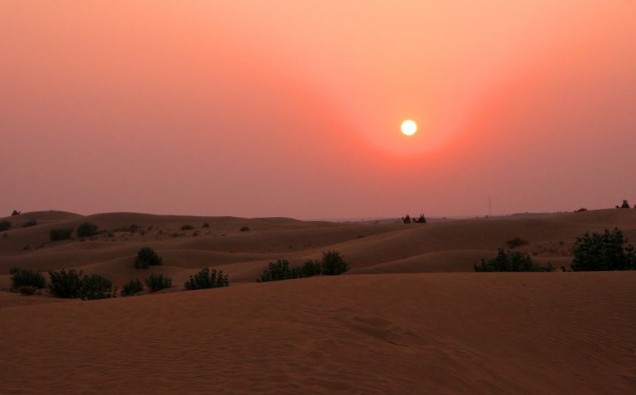
With the mercury already shooting to 40 degrees centigrade (104 Fahrenheit) in southern Pakistan and eastern and southern parts of India, South Asia is bracing for a series of heat extreme waves over the next two months.
According to experts, this is going to be the second consecutive hottest year in the region after last year during which more than 5,000 people died of direct heat-related causes, around 2000 of the deaths recorded in Pakistan alone.
In Karachi, more than 1000 people lost their lives to soaring heat coupled with severe power outages. Weather pundits have forecast the possibility of recurrence of a similar simmering summer this year.
“Temperatures may shoot up well above 40 degree centigrade during the months of May and first half of June. Karachi may be the major theatre of heatwave” says Ghulam Rasool, Director General Pakistan Meteorological Department.
However, experts also hint at early start of the monsoon season in Pakistan and India that typically starts from 1st June in India and from 15th June in Pakistan. The first casualty of heat wave reported this year was in Karachi when a 45 -year-old person died on April 22.
South Asia has experienced heatwaves in the recent past in the years of 2007 and 2010. The 2007 Asian heat wave affected the South Asian countries of India, Pakistan, Bangladesh, and Nepal. The heat spell ran during the months of May and June, with the death toll shooting up to 192. The meteorological department registered a record maximum temperature of +52 °C (126 °F) in Sibi.
Four people died as the temperature in central Punjab city of Lahore touched +48 °C (118 °F) on 9 June, which was a record for the previous 78 years. During the year 2010, the onset of summer was quite early. Temperatures rose to the level of those of May or June in March that year. However, in the years 2014 and 2015, the region experienced a pleasant weather even during the month of traditionally hot month of May, a proof of fast-changing climate in this part of the world.
If weather predictions prove correct, the situation is going to be much difficult for the South Asians again. Already, the minimum temperatures have been markedly above normal at a number of places. The high temperatures may come down only after the start of the monsoon rains but these rains are not scheduled to pour until the beginning of June.
Weather watchers and local experts fear if the mercury continues to soar above average degrees until the arrival of monsoon, the situation could turn into a major humanitarian crisis, resulting in deaths and affecting major crops.
As the average temperatures on the globe are on the upward trend, heat waves are one of the largest causes of weather-related deaths. The situation becomes particularly hazardous if the temperatures do not drop during the night, because this would normally be when the body recovers from the heat.
Besides, the situation in Pakistan and India is exacerbated as majority of people do not have access to air-conditioning or cooling facilities.
Electric fans, afforded almost everywhere, can only provide relief if the temperatures are below 35C, and they have also been shown to accelerate dehydration.
During last year’s heatwave in Karachi, the frequent power outages made the predicament worse, especially for the elderly and those exposed to scorching heat.
That is one reason why medical experts, doctors, scientists and weather experts have cautioned citizens against exposure to heat.
A conference recently concluded that while natural calamities or extreme weather cannot be averted, their harmful effects could be mitigated to a large extent. For example, a heat stroke may be avoided by having higher water intakes, cover the head, or simply staying away from excessive exposure to sun.
Given South Asians everyday lifestyle of spending much of the daytime at work out in the open or having little or no access at all to cooling or first aid medical services due to poverty and ineffective governance, saving lives from impending extreme heat will be a big test for both the governments and the society.

















